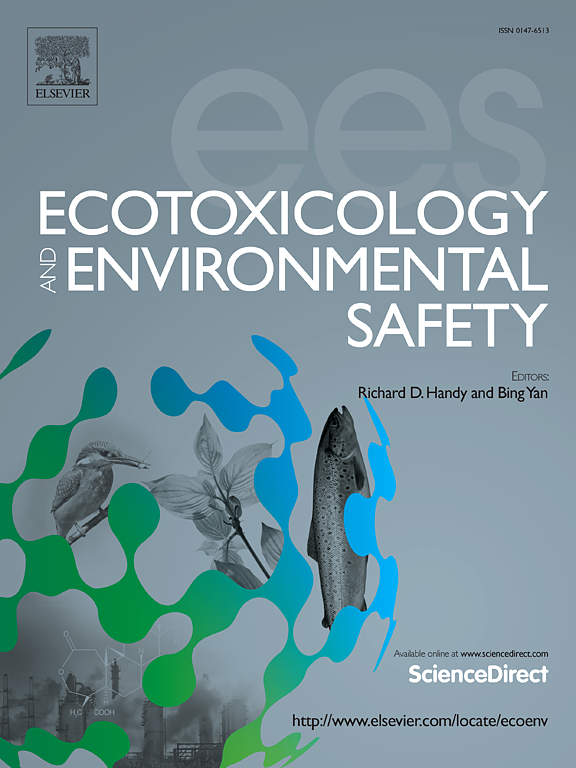Prioritizing endocrine-disrupting chemicals targeting systemic lupus erythematosus genes via Mendelian randomization and colocalization analyses
IF 6.1
2区 环境科学与生态学
Q1 ENVIRONMENTAL SCIENCES
引用次数: 0
Abstract
Background
Systemic lupus erythematosus (SLE) is a multifactorial autoimmune disease, with both genetic and environmental influences contributing to its development. Among environmental factors, endocrine-disrupting chemicals (EDCs), present in plastics, pesticides, and personal care products, have been implicated in immune disruption. This study investigated the interactions between EDCs and SLE-associated genes to elucidate their role in SLE susceptibility.
Methods
We employed Mendelian randomization (MR) and colocalization analyses to explore genetic predispositions and environmental interactions in SLE. Cis-expression quantitative trait loci (cis-eQTL) data were obtained from the eQTLGen Consortium, and genome-wide association study (GWAS) data for SLE were acquired from the IEU Open GWAS database. MR analysis was performed to establish causal links between gene expression and SLE, and colocalization analysis was used to validate these associations.
Results
Our analysis identified 18 genes causally associated with SLE. Among them, five genes (CDCA7, HOXA1, LRRC37A4P, HOXA5, and DND1P1) showed strong evidence of colocalization with SLE. Further, 28 EDCs, including bisphenol A, bisphenol S, and endosulfan, were found to interact with these key genes, potentially influencing immune function and exacerbating the genetic susceptibility to SLE.
Conclusions
This study highlights the complex interactions between EDCs and genetic predisposition in SLE. The findings provide valuable insights into how environmental exposures, particularly EDCs, may contribute to the development and progression of autoimmune diseases like SLE. These results suggest potential targets for future therapeutic interventions and underscore the need for further research on gene-environment interactions in SLE.
通过孟德尔随机化和共定位分析,优先考虑针对系统性红斑狼疮基因的内分泌干扰化学物质
系统性红斑狼疮(SLE)是一种多因素自身免疫性疾病,遗传和环境因素都对其发展有影响。在环境因素中,存在于塑料、杀虫剂和个人护理产品中的内分泌干扰化学物质(EDCs)与免疫紊乱有关。本研究探讨了EDCs与SLE相关基因之间的相互作用,以阐明其在SLE易感性中的作用。方法采用孟德尔随机化(MR)和共定位分析探讨SLE的遗传易感性和环境相互作用。顺式表达数量性状位点(cis-eQTL)数据来自eQTLGen Consortium, SLE全基因组关联研究(GWAS)数据来自IEU Open GWAS数据库。磁共振分析建立了基因表达与SLE之间的因果关系,共定位分析用于验证这些关联。结果我们的分析确定了18个与SLE相关的基因。其中,5个基因(CDCA7、HOXA1、LRRC37A4P、HOXA5和DND1P1)显示出与SLE共定位的有力证据。此外,包括双酚A、双酚S和硫丹在内的28种EDCs被发现与这些关键基因相互作用,可能影响免疫功能并加剧SLE的遗传易感性。结论本研究强调了EDCs与SLE遗传易感性之间复杂的相互作用。这些发现为环境暴露,特别是EDCs,如何促进自身免疫性疾病(如SLE)的发生和进展提供了有价值的见解。这些结果提示了未来治疗干预的潜在目标,并强调了进一步研究SLE中基因-环境相互作用的必要性。
本文章由计算机程序翻译,如有差异,请以英文原文为准。
求助全文
约1分钟内获得全文
求助全文
来源期刊
CiteScore
12.10
自引率
5.90%
发文量
1234
审稿时长
88 days
期刊介绍:
Ecotoxicology and Environmental Safety is a multi-disciplinary journal that focuses on understanding the exposure and effects of environmental contamination on organisms including human health. The scope of the journal covers three main themes. The topics within these themes, indicated below, include (but are not limited to) the following: Ecotoxicology、Environmental Chemistry、Environmental Safety etc.

 求助内容:
求助内容: 应助结果提醒方式:
应助结果提醒方式:


